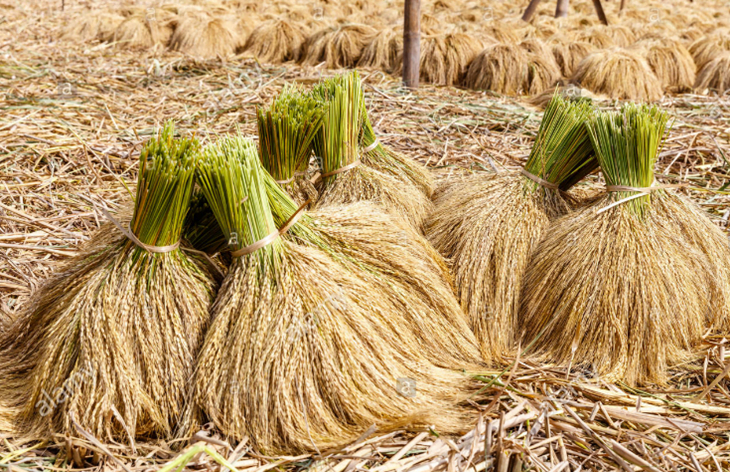It seems that during recent years, within the substance use disorder arena, there has been a trend toward changing views about: substance use, sobriety, abstinence, the harms of use, harm reduction, recovery, pathways of personal improvement, problematic use, and addiction illness itself.
While advancements, improvements, and innovations are welcome, what should be preserved?
And how can one go about guiding change or the process of development within our various systems?
In this essay concerning the substance use disorder sector, I will:
- Outline what seem to be current priorities in public policy, research, clinical care, and the education of clinical professionals;
- List what seem to be considered four pests impeding that advancement; and
- Provide three thoughts that can be held as considerations toward retaining the value of the old, while establishing the new1.
Priorities in the direction we are heading
We seem to be moving toward:
- Formalizing what I have called “Addiction Hospice” (palliative SUD care, both as a clinical process and as an endpoint goal).
- For those unfamiliar with the sort of thinking reflected in my phrase “Addiction Hospice” you might want to read a paper5 from the New England Journal of Medicine that focuses on the hospice model applied to SUD’s. And you might be interested in another paper6 that applies that model more generally, across various problem areas.
- Toward supplying a back story, I’ll say that I started to identify this trend and called it “Addiction Hospice” around 2007 or so (during the final years of our Behavioral Health Recovery Management project2,3,4).
- By that time in the BHRM project our agency’s programming had moved beyond clinically-derived care, and beyond person-centered care. We had become person-driven.
- Our services were so tipped toward allowing patient preferences to drive care that both fidelity to core evidence-based practices and the potential benefits of using evidence-based approaches were too often largely lost in the wider framework of doing what the patient said and wanted.
- The ever-widening distribution of addiction hospice as an individual care plan, treatment program component, treatment program total identity, and as a presumptively-applied framework of care to the unnecessary and a priori exclusion of other menu options.
- Efforts in ignoring the harms of use7.
- Decriminalization of all street drugs.
- Movement of street drugs into existing structures of research and development for corporate manufacture and sales (e.g. hallucinogenic mushrooms as medicine).
- Expansion of regulatory controls and scheduling of pharmaceutical compounds not formerly recognized as having significant addiction potential (e.g. gabapentin).
- Loosening of regulatory controls for substances with long-known and serious addiction potential when of pharmaceutical-grade (e.g. heroin).
- Increasing entrenchment in the overlooking of cigarette smoking as an addiction to treat during addiction treatment and death rates from cigarettes far surpassing those of the opioid epidemic and COVID-19, while claiming approaches like MAT and the Physician Health Program (PHP model) that allow cigarette smoking are a “Gold Standard” approach8.
Four Pests
Meanwhile, we seem to be moving incrementally toward deciding four particular things are pests.
- Recovery, both as a goal and as a process9.
- Sobriety (its functional significance) and Abstinence (its efficacy and value, vs. its safety and vs. one’s ability to tolerate it)10.
- Addiction illness (the construct)11, 12.
- Treatment (its indications and its current forms)13.
 photo by Laitche
photo by Laitche
I have two questions for the reader to consider:
- Are “recovery”, “sobriety/abstinence”, “addiction illness” and “treatment” really pests?
- How is the history of the eradication of pests relevant to our work?
Concerning the priorities and directions I noted above, I have three cautionary thoughts to offer. We could hold the considerations I will provide as thoughts, or as questions. We could use them for the purpose of helping us guide both overall change and the process of development within our various systems.
Three Cautionary Thoughts
- Chesterton’s Fence14.
- The basic notion of this principle is to find out why a fence was put in place and consider that reason before removing it. Those arriving late might simply see a fence as serving no useful purpose and remove it.
- We could apply this principle to our sector and propose some questions before we eliminate fences. Should the fence of abstinence or sobriety simply be removed? Should the fenced area of treatment be removed? Should the fence dividing addiction illness specifically from substance use disorders generally be taken away? Should the area inside recovery be the same as the area outside recovery?
- A mouse utopia resulting in colony collapse15.
- In this famous study, an ideal living environment was provided to a small initial number of breeding pairs of mice (including unlimited food and water, carefully planned ample space, and recreational opportunities).
- Self-harm, violence to others and cannibalism soon began. Interactions grew worse, and reproduction stopped.
- Even though ample space for a thousand more was available, a final brood of pups was born, and no more reproduction occurred. The birth of the last brood of pups was the marker for, and date of, “colony death”.
- Researchers could only surmise that without having a sufficient behavioral struggle for survival (individual purpose), the colony collapsed despite ideal conditions.
- The destructiveness of raccoons in Japan. The history of this invasive species in Japan is one of damaging long-standing existing structures, filling limited natural habitat, and harm to crops16. To me, “structures”, “natural habitat” and “crops” are metaphors of general and specific kinds of recovery capital.
I ask the reader: “What of our existing SUD structures, habitats, and other resources worth preserving?”
A Personal Note of Historical Reflection
I grew up in Hong Kong in the 1970’s. During most of my time living in HK the ruler of China was Mao.
During my childhood I heard many first-hand accounts of the “Four Pests” or “Four Enemies” Campaign. The amazing accounts I heard centered on the giant magnitude of the:
- folly of the idea,
- waste of the effort, and
- destructiveness of the consequences caused by trying to achieve it.
What was the “Four Pests Campaign”?
The Four Pests Campaign was one of the first actions taken in the Great Leap Forward in China from 1958 to 1962. The four pests to be eliminated were rats, flies, mosquitoes, and sparrows. The extermination of sparrows is also known as Smash Sparrows Campaign or Eliminate Sparrows Campaign which resulted in severe ecological imbalance, being one of the causes of the Great Chinese Famine. In 1960, Mao Zedong ended the campaign against sparrows and redirected the fourth focus to bed bugs.
By April 1960, Chinese leaders changed their opinion due to the influence of ornithologist Tso-hsin Cheng who pointed out that sparrows ate a large number of insects, as well as grains. Rather than being increased, rice yields after the campaign were substantially decreased. Mao ordered the end of the campaign against sparrows, replacing them with bed bugs, as the extermination of sparrows upset the ecological balance, and insects destroyed crops as a result of the absence of natural predators.
By this time, however, it was too late. With no sparrows to eat them, locust populations ballooned, swarming the country and compounding the ecological problems already caused by the Great Leap Forward, including widespread deforestation and misuse of poisons and pesticides. Ecological imbalance is credited with exacerbating the Great Chinese Famine, in which 15–45 million people died of starvation. The Chinese government eventually resorted to importing 250,000 sparrows from the Soviet Union to replenish the population.17
 photo by Andreas Trepte
photo by Andreas Trepte
While preparing this blog post, I did a Google search of the term “Four Pests Campaign”. One of the very first results was the National Library of Medicine at the NIH. Below I added their entire verbatim entry for the “Four Pests Campaign”. Here it is:
HEALTH FOR THE PEOPLE: Continuity and Change in Asian Medicine. Beginning in the 1950’s, the Chinese state mounted the Patriotic Health Campaigns to improve sanitation and public health. In 1958 the campaigns focused on “the four pests”: rats, sparrows, flies and mosquitoes. Later sparrows were removed from the list, and fleas and lice were added. Snails were particularly targeted for eradication because they carried the debilitating disease of schistosomiasis. In addition to spreading disease, these vermin also ate food, chewed electrical wires, and thus disrupted the social fabric that Mao Zedong was trying to build in China. The campaigns were short-lived and unsuccessful – more enduring were the efforts to improve water quality and waste treatment, which led to dramatic reductions in the epidemic diseases of cholera, plague and typhoid.
What this description omits is personally shocking to me, especially compared to the first-hand accounts I heard of the activities undertaken and the folly of effort, not to mention the horrible human and environmental consequences that were suffered, and the easily available historical information fundamental to the events that the entry does not include.
 Alamy stock photo
Alamy stock photo
It turned out that sparrows did not eat so much rice that the sparrows were harmful to the people in rice production. Rather, the planners learned the very hard way that sparrows ate enough insects to be helpful for rice production.
What negative consequences will we experience if we succeed at the eradication of recovery, sobriety and abstinence, addiction illness, and treatment? Or if we reduce them to the status of uncommon, rare, endangered, or nearing extinction? Would the idea of their removal be seen later by historians as folly? As wasted effort?
By contrast, my hope for our work with people in the SUD space is summarized in my series titled Addiction and the Stages of Healing18. In short my hope is that we continue to improve and expand safe, effective, and available help of all kinds, for all people, in all stages of “ready, willing, and able”19.
And my hope is that rather than see them as pests:
- recovery, and sobriety/abstinence would be valued as natural resources;
- addiction science and recovery science in all its forms (empirical, experiential, phenomenological, ethnographic, etc.) would be valued as differing knowledge-based resources20,21,22
- and the wide variety of specialty approaches to treatment would be valued and retained on the tray of potentially helpful tools while new ones are developed.
I hope we develop large stores of ample resources across a wide variety of kinds.
- Do we want our grain silos empty (starvation) or full (ample supply available)?
- Do we want our silos of history lost (starved of knowledge and wisdom) or full (ample supply readily available)?
 photo by Leaflet – Own work, CC BY-SA 3.0
photo by Leaflet – Own work, CC BY-SA 3.0
- What current resources are being eliminated? What will we lose next as a result of those losses?
- What up-stream mechanisms in the production of recovery capital are important? What up-stream factors brought our current recovery capital about? Should those factors and resources be preserved?
- Concerning individual wellbeing, what inter-connected resources and factors are under-valued due to over-familiarity? And which should we preserve rather than eliminate as so-called “pests”?
To close, I would like to suggest that everyone should consider reading a blog post at Recovery Review titled, “The Seed Vault of Recovery History and Our New Recovery Advocacy Movement” (Stauffer, 2020).
References
1Coon, B. (2020). Older Model 2.0, Newer Model 3.0. Recovery Review.
2Boyle, M.G., White, W.L., Corrigan, P. W. & Loveland, D. L. (2001). Behavioral Health Recovery Management: A Statement of Principles.
3Great Lakes Addiction Technology Transfer Center. (2007). Frontline Implementation of Recovery Management Principles: An Interview with Michael Boyle by William L. White.
4Kelly, J. F. & White, W., Eds (2010). Addiction Recovery Management: Theory, Research and Practice. Humana Press.
5Caruso Brown, A. E. (2020). Treating Addiction as a Terminal Disease. New England Journal of Medicine. 328:3. DOI: 10.1056/NEJMp1909298
6Ebenau, A., Dijkstra, B., Stal-Klapwijk, M., ter Huurne, C., Blom, A., Vissers, K. & Groot, M. (2018). Palliative Care for Patients with a Substance Use Disorder and Multiple Problems: a Study Protocol. BMC Palliative Care. 17:97
7Coon, B. (2019). Harms of Use: A List of References. Recovery Review.
8Coon, B. (2020). One, Two, or None? Recovery Review.
9Coon, B. (2020). Addiction Counselors Should Become Familiar with “Recovery”. Recovery Review.
10Coon, B. (2020). Should We Include a Moral Dimension? The Aesthetics and Anesthetics of Addiction. Recovery Review.
11Coon, B. (2020). What IS Addiction? Recovery Review.
12Coon, B. (2019). “The Big 5” Substance Use Disorder Criteria. Recovery Review.
13Coon, B. (2021). Stigma, humanizing terms, and taking on hostility: A little more. Recovery Review.
14https://fs.blog/2020/03/chestertons-fence/
15Calhoun J. B. (1973). Death Squared: The explosive growth and demise of a mouse population. Proceedings of the Royal Society of Medicine. 66(1 Pt 2), 80–88.
16Ikeda, T., Asano, M. Matoba, Y. & Abe, G. (2004). Present Status of Invasive Alien Raccoon and its Impact in Japan. Global Environmental Research. 8(2): 125-131.
17Wikipedia. Retrieved from the World Wide Web on 03/10/2021.
18Coon, B. (2019). Addiction and the Stages of Healing. Recovery Review.
19Coon, B. (2020). Peer Support, or Harm Reduction, or Recovery Coaching? Recovery Review.
20Coon, B. (2020). Research Describes Everyone and Applies to No One. Recovery Review.
21Coon, B. (2020). Recovery: let’s do the math. Recovery Review.
22Coon, B. (2021). Recovery: What is it Good For? Recovery Review.
Suggested Reading
Ortega y Gasset, J. (1932/1994). The Revolt of the Masses. W. W. Norton.
Smith, D. W., Stahler, D. R.. & MacNulty, D. R. (2020). Yellowstone Wolves: Science and Discovery in the World’s First National Park. University of Chicago Press.
Stauffer, B. (2020). The Seed Vault of Recovery History and Our New Recovery Advocacy Movement. Recovery Review.
Acknowledgments
The author thanks Jason Schwartz, Todd Tillman, and Joe Najdzion for comments on previous versions of this writing.